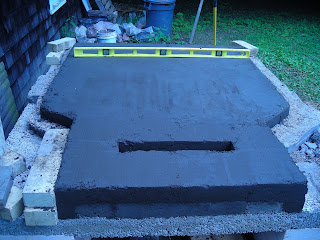break between the outside and the inside. The 4" of dense dry mud absorbs heat from the fire and then gives it back. By insulating it, that heat goes more into the oven than out into the atmosphere. I used two different mixes for insulating. One was with a coarse sawdust and high clay content soil mix. The other was our regular mud mix and lots of straw.

 Notice the bottle on the right side of the oven; the arch insulating layer is continuous with the insulation layer under the hearth encasing the whole oven.
Notice the bottle on the right side of the oven; the arch insulating layer is continuous with the insulation layer under the hearth encasing the whole oven.







